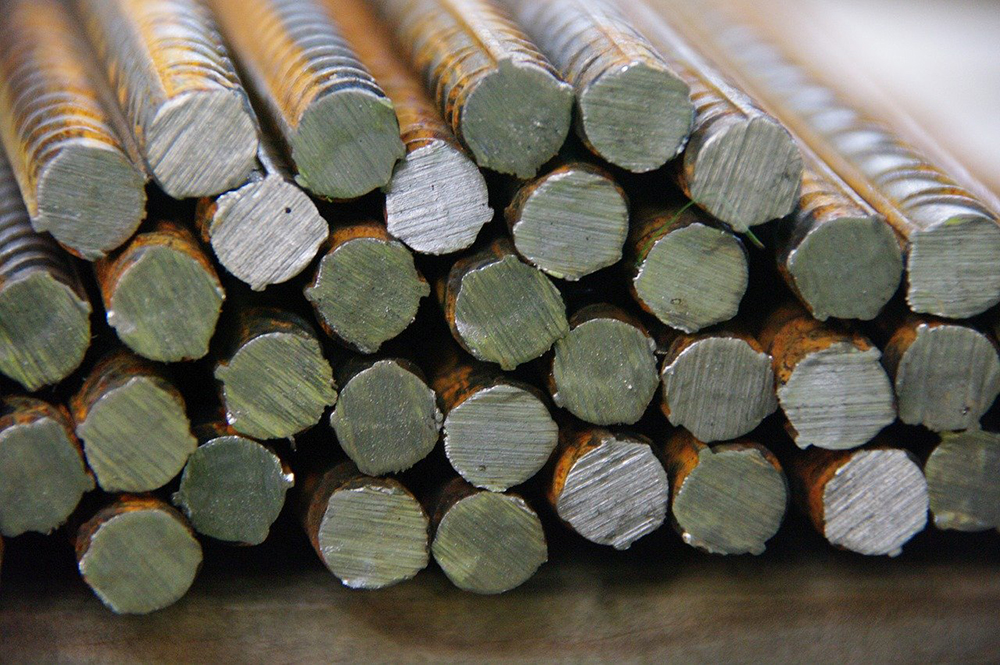What is a rebar? And how can you forge tools with it? For survivalists and preppers alike, this is a handy skill you’d want to learn!
How to Make a Knife from Rebar
If I had to list the three skills that would help you thrive in post-collapse world blacksmithing would undoubtedly make that list. Many of you might be thinking, ‘Huh? What about shooting, security, growing food, and the like?’
Well, if you shape metal into things that people want, you have a job in SHTF already! If you can make hinges, slide locks, prybars, hooks, knives, and nails, you are going to have a nice customer base. If you can forge weld axes back together then you have a whole new customer base.
Learning on Rebar

A rebar is short for reinforcing bars and is considered softer metal. Rebar is one of the best training tools that you can get your hands on. When you are forging at the earliest stages, there is really no reason to put your hands on an expensive piece of 1095 steel for making a knife. You are probably gonna mess it up and ruin a good piece of cold-rolled steel.
Rebar can be made from a mix of metals with various hardness. That means that it is a metal that is hard to rely on in terms of consistency. However, it’s dirt cheap, it can often be found laying around for free and in scrap yards. It’s easy to bring home more than you will ever need for near nothing!
Just be wary of galvanized rebar as that is often coated with things that could give off poisonous gas when burning. Things like zinc coating can be extremely dangerous particularly indoors. You must be incredibly careful that you don’t kill yourself breathing in zinc burn off!
Forging a Rebar Knife
Forging a knife using rebar is great practice and you can use a rebar knife to cut all kinds of things. I have seen very cool rebar cutlery that did the job just fine. However, this is rebar so your knife will not hold an edge like a hard steel blade would. This will not be the knife you wanna take with you for a bushcraft adventure. Rebar can be brittle, as well, and this knife could break with too much abuse.
Step 1: Choose the Rebar
If you are a beginner blacksmith with limited skills and resources, use a nice long piece of rebar and you will be able to work the steel without worrying about burning your gloves or hands. Use a piece of steel that is about 3ft long to begin. ¼ inch rebar is what you are looking for.
Step 2: Shape the Blade
Start by shaping your blade’s edge by flattening out a section that is around 3 inches long. The rebar will flatten easily under a good hammer, but you aren’t just looking to draw out the metal here. You want to begin to flatten the blade but also hammer the front of your blade back into the metal to assure you have a sturdy blade that doesn’t become too brittle.
As the blade begins to take shape you are also going to flatten the spine of the blade on the anvil but hammering down on your blade. Naturally, the belly of the blade will begin to form. You can draw out a wide blade or keep it thin, the choice is yours.
Your goal here is to taper the knife edge but keep a spine of about 3/8 an inch.
Step 3: Create the Edge
If you are going to sharpen this edge without grinding it, you will need to taper the knife to around 1/8 an inch. Just keep working the metal outward until you achieve this but also keep the spine flat and straight.
When the edge is achieved you can use a hammer with a polished head to create a nice smooth edge on the blade.
Step 4: The Handle
The handle of your new knife can be left up to your own interpretation. If you have a blade that you are happy with, the best thing you can do is to bend the handle up a bit to make it more ergonomically sound.
With my rebar knives, I cover the handles with cordage so that you can get a real grip on them. Quarter-inch rebar is not easy to hold when you are trying to cut or carve something.
Some people do intricate things with rebar handles like draw them out, shape the but of the knife, or do something unique altogether. I like to keep it simple. But feel free to create your own design, that is what blacksmithing is about.
Conclusion
You will still need to sharpen your edge and a good sharpening stone will get that done for you. Be patient with the sharpening. In fact, be patient with the whole process. Forging tools is not a quick process.
Blacksmithing is about manipulating metal to the end you desire. That is a powerful skill that should not be underestimated. The cost of entry is also a lot less than you might think so give it a whirl and find some cheap rebar to practice on.
Do you want to learn how to use rebar to forge tools and weapons? Have you ever tried it before? Share with us your thoughts in the comments section!
Up Next:
- Blacksmithing: Useful Hobby and Survival Skill
- Knifemaking: Make A Knife From An Old Wrench
- The Complete Guide To Knife Steel Quality


